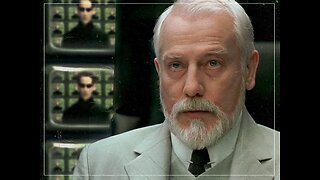Premium Only Content

The Throne of Consent: A Reflection on Changing Gender Dynamics and the Modern Man
For millennia, the dynamics between men and women were shaped not by abstract ideals but by the harsh realities of survival. The world was physically demanding, unpredictable, and often dangerous. In that context, the biological differences between men and women translated into distinct roles, where strength and protection were necessary, and nurturing and stability were equally vital. Over time, this division of labor and responsibility created the patriarchal structures we often reflect on today.
But in the modern age—one defined by technological advances, global stability (in relative terms), and economic complexity—those survival-driven roles have shifted, raising profound questions about identity, purpose, and consent in the realm of gender dynamics.
I. The Historical Roots of Paternalism and Patriarchy
In the not-so-distant past, survival demanded physicality. Men, biologically stronger on average, assumed the roles of protectors and providers. Women, equipped with the ability to nurture and bear children, ensured the continuation of life and provided emotional and social cohesion within communities. These roles were not imposed by arbitrary authority but arose from necessity and mutual consent.
1. The Consent of Safety and Provision
Women historically consented to male leadership not out of coercion but from a pragmatic understanding of survival. Men built walls, fought wars, and hunted for sustenance. In turn, women raised the next generation and ensured societal continuity. It was a symbiotic relationship, not a competition.
2. The Victory of Men in Civilization
Over centuries, men’s drive to conquer, build, and innovate led to the comforts we enjoy today: airplanes, infrastructure, legal systems, and relative safety. These triumphs, though collective in effort, were heavily influenced by the traditional male role of protector-provider. Ironically, these victories reduced the immediate need for such roles, leaving the modern man searching for a new purpose.
II. The Collapse of the Throne: A Shift in Consent
The traditional “throne” of male authority was never a structure imposed by brute force—it was upheld by women’s consent. This consent wasn’t passive but rooted in the need for protection and provision. As technology and societal shifts diminished those needs, women began to withdraw that consent.
1. The Rise of Equality
With the advent of industrialization, education, and economic opportunities, women were no longer dependent on men for survival. They began to seek equality—not just in rights but in roles. This shift, while necessary and just, came with unintended consequences for traditional male identity.
2. The Unmoored Man
When women redefined their roles, many men were left without a clear sense of purpose. If protection and provision were no longer essential, what remained? For some, the answer became disengagement—a retreat into video games, passive consumption, or emotional withdrawal. Without the “queen” needing the “king,” the throne of masculinity became irrelevant.
III. The Modern Struggle: Validation and Purpose
Men, at their core, seek purpose and validation. Historically, these were tied to their ability to protect, provide, and lead. In the absence of clear societal roles, men often feel adrift, struggling to redefine themselves in a world that simultaneously demands equality yet criticizes traditional masculinity.
1. Seeking Approval in New Forms
Men today often strive for validation by aligning with modern ideals. Whether it’s advocating for equality, embracing emotional vulnerability, or rejecting traditional norms, men adapt to gain approval. But this adaptation can sometimes feel performative rather than authentic, leaving deeper needs unfulfilled.
2. The Burden of Ambiguity
Modern men face mixed messages: be strong but sensitive, lead but don’t dominate, provide but share equally. These contradictions create confusion, as the framework for masculinity becomes increasingly blurred. The result? Many men either overcompensate through hyper-masculinity or disengage entirely.
IV. Rebuilding the Throne: Toward Balanced Dynamics
The throne of masculinity doesn’t have to collapse—it can be reimagined. This requires a shift from hierarchical dynamics to partnership, where men and women co-create roles based on mutual respect, shared goals, and individual strengths.
1. Purpose Beyond Gender Roles
Men must find purpose not in dominance but in contribution. Whether it’s mentoring, creating, or supporting, purpose should transcend traditional definitions of masculinity. This requires introspection and a willingness to redefine self-worth.
2. Women as Partners, Not Rivals
Rather than competing with women, men can embrace partnership. This means recognizing and valuing the strengths women bring to the table while also asserting their own. Collaboration, rather than contention, should guide the relationship between genders.
3. A New Definition of Leadership
Leadership is no longer about being on the throne—it’s about lifting others. Men can lead by example, showing emotional intelligence, resilience, and adaptability. By embracing a balanced approach, they can inspire without imposing.
V. Lessons from History: A Blueprint for the Future
History shows us that societal roles evolve, but human needs remain constant. Men and women both seek love, safety, purpose, and connection. The key is finding ways to meet these needs in a changing world.
1. Respect for the Past
Acknowledging the value of traditional roles doesn’t mean clinging to them. It means understanding why they existed and using that knowledge to inform new structures.
2. Embracing the Present
Modern men must navigate a world where gender roles are fluid. This requires adaptability, humility, and a commitment to growth.
3. Building the Future Together
The future of gender dynamics isn’t about reclaiming thrones or dismantling them—it’s about building shared foundations. By working together, men and women can create a society that values strength, compassion, and collaboration.
Conclusion: A Call to Reimagine Masculinity
The modern man stands at a crossroads. The throne of traditional masculinity has shifted, but the need for purpose and validation remains. By embracing partnership, redefining leadership, and seeking meaning beyond outdated roles, men can forge a new path—one that honors the past while embracing the possibilities of the future.
This isn’t just about men or women; it’s about humanity. Together, we can create a world where strength and compassion coexist, where leadership is shared, and where every individual finds their place—not on a throne, but within a community built on mutual respect and shared purpose.
-
 12:38
12:38
FragmentsOfTruth
4 days agoThe Architect Scene Finally Explained: The Moment That Rewrites The Entire Matrix Trilogy
323 -
 53:14
53:14
Professor Nez
2 hours ago🇺🇸 Trump’s SECRET Weapon for American Families (LIVE)
6.09K3 -
 1:07:14
1:07:14
DeVory Darkins
2 hours agoBREAKING: Washington Post suffers Major SETBACK after Hegseth story gets debunked
103K56 -
 LIVE
LIVE
StoneMountain64
2 hours agoArc Raiders EXPEDITION Money Making is Insane
166 watching -
 2:16:21
2:16:21
Side Scrollers Podcast
5 hours agoTwitch has a SERIOUS Problem + Leaflit’s VIRAL Interview + More | Side Scrollers
22K3 -
 LIVE
LIVE
Barry Cunningham
19 hours agoBREAKING NEWS: President Trump Hosts Cabinet Meeting & Makes MAJOR Announcement!
1,991 watching -
![Wall Street CRASHED Bitcoin DOWN To $80,000!! [Heres Proof] | EP 1389](https://1a-1791.com/video/fww1/dc/s8/1/G/E/S/E/GESEz.0kob-small-Wall-Street-CRASHED-Bitcoin.jpg) 1:31:03
1:31:03
Simply Bitcoin
4 hours ago $0.84 earnedWall Street CRASHED Bitcoin DOWN To $80,000!! [Heres Proof] | EP 1389
23.6K1 -
 27:09
27:09
ROSE UNPLUGGED
21 hours agoBridging the Divide: Joe Manchin on Politics, Principles, and People First
1.28K -
 1:02:19
1:02:19
Timcast
3 hours agoMedia MELTS DOWN Over New Media Pentagon Takeover
136K56 -
 2:04:40
2:04:40
Steven Crowder
6 hours agoWar Criminal Pete Hegseth: Debunking the Media's Newest BS Smear Campaign
463K297